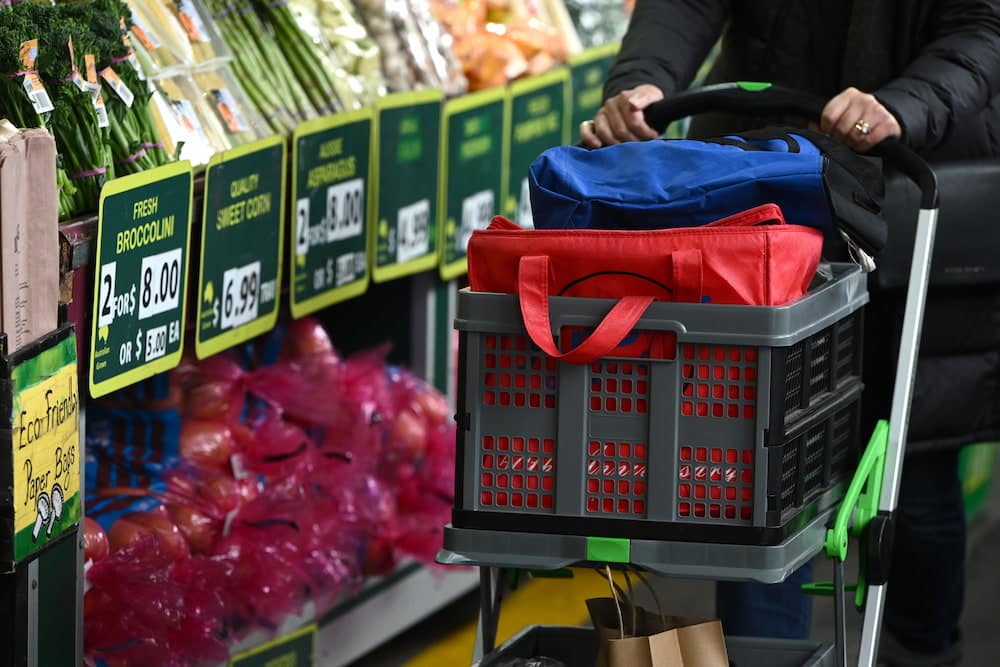Consumers are being warned the price of fruit and vegetables could rise after flooding across NSW, Victoria and Tasmania impacted key agricultural areas.
Prime Minister Anthony Albanese has been touring flood-impacted areas in Victoria and NSW and said the continuing rain will drive prices higher.
“Tragically, there had been such a good harvest anticipated in wheat, in fruit and vegetables, in so many of the products that the Victorian food basin … is such a rich area, as well as in areas like poultry,” Mr Albanese told ABC Melbourne.
“There’s no doubt that there will be an impact … and the impact will feed into higher prices, most unfortunately at a time when inflation has already been rising.”
Agriculture minister Murray Watt joined the Prime Minister on Monday to assess the flood damage around Forbes in central western NSW.
He told a media conference prime agricultural regions had been “very badly impacted by the repeated floods”.
“It’s likely that these floods are going to have a cost of living impact on people because of the impact of prices of fruit and vegetables,” Mr Watt said.
The department of agriculture is trying to work out what financial impact flooding across parts of NSW, Victoria and Tasmania will have on agricultural production.
“I think that we can expect that it is going to be a very large dollar impact,” Mr Watt said.
The federal and state governments are also discussing extra support for impacted farmers.
Victorian Premier Daniel Andrews conceded there would “almost certainly” be food production impacts stemming from the flooding.
“This is the food bowl of our state and the food bowl of our nation, whether it be in terms of fruit and veg and cropping more broadly,” he told reporters.
In Victoria’s north, where floodwaters continue to rise, farmers are counting the costs, especially in the food bowl around Shepparton.
Victorian Farmers horticulture president Nathan Free told AAP fruits such as apples, pears, peaches, nectarines and plums have all been badly hit.
“If they get flooded now, you possibly may not have a crop the coming season,” he said.
“We won’t see it today and tomorrow but we’ll see it for the year to come.”
Victorian Farmers Federation president Emma Germano said it was too early to say what the full impact on food availability and prices would be.
“Floodwaters have significantly impacted many parts of the agriculture industry,” she told AAP on Monday.
“There will be significant impact and disruption coming through our supply chain in the coming months.”
Farmers in Victoria had been were expecting a bumper winter crop but analysts say they now face volume and quality downgrades due to the excessive rains.
RaboBank issued its Australian winter crop forecast on Monday and found a significant impact on yields of low-lying crops with many underwater in central and northern Victoria.
“The biggest impacts in Victoria, are expected in the low-lying country … there are literally crops fully underwater,” RaboBank’s Dennis Voznesenski told AAP.
Flooding in parts of both NSW and Victoria has led to washed-out fields and unharvestable crops.
GrainGrowers chairman Brett Hosking said lentil crops had been badly affected by the Victorian flooding, while hay has been “completely ruined” in the state’s northwest.
While growers remain optimistic, he told AAP there would be losses.
“There’s been some crops flattened in places … so there will definitely be a yield impact, that’s absolutely certain,” he said.
“The extent of it is difficult to gauge at the moment.”
Mr Voznesenski said NSW felt the brunt of flooding from excessive rain earlier in the year.
“Winter crops like wheat, barley and canola were already downgraded in NSW and we could see even more cropping land impacted now,” he told AAP.



